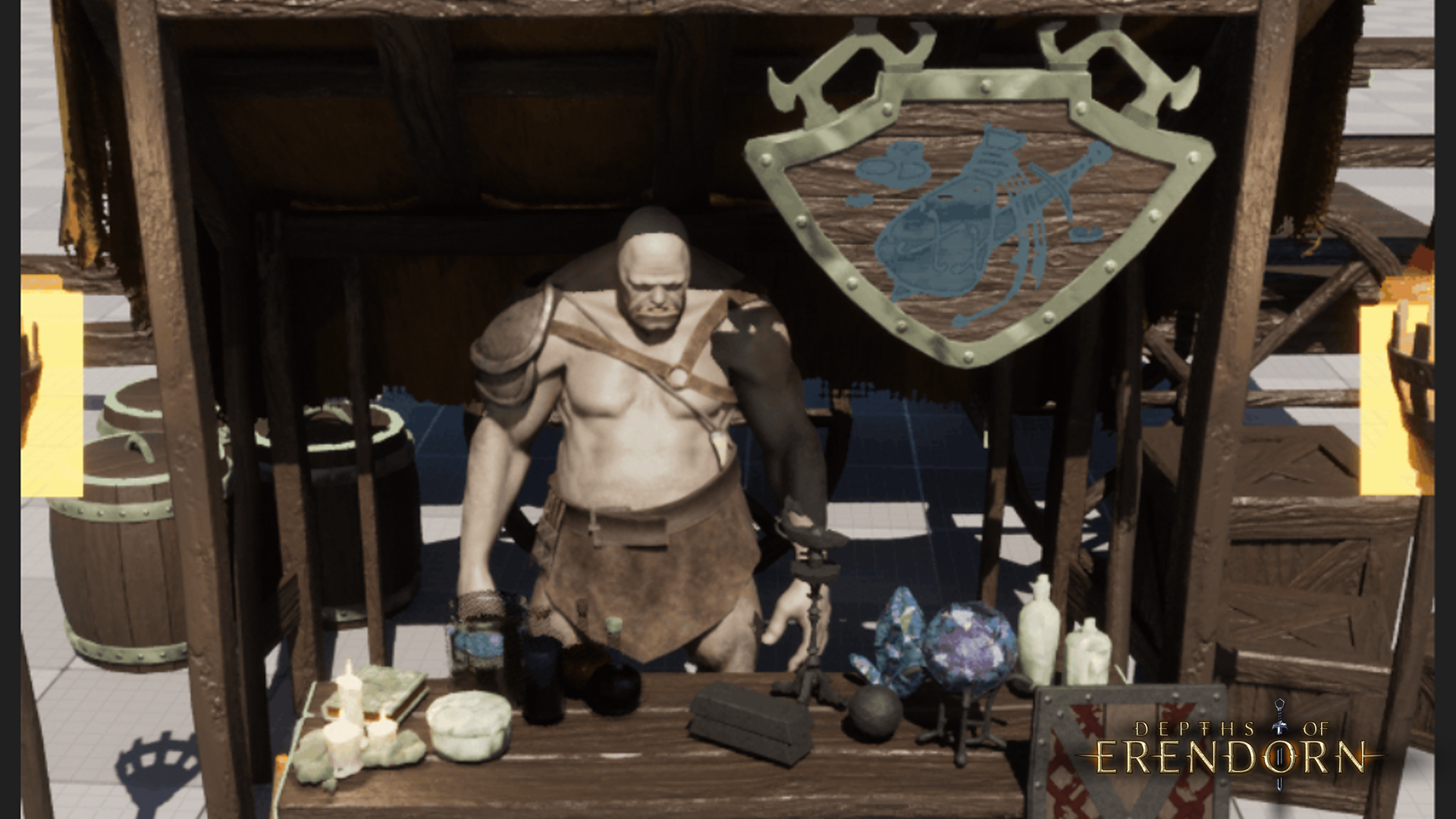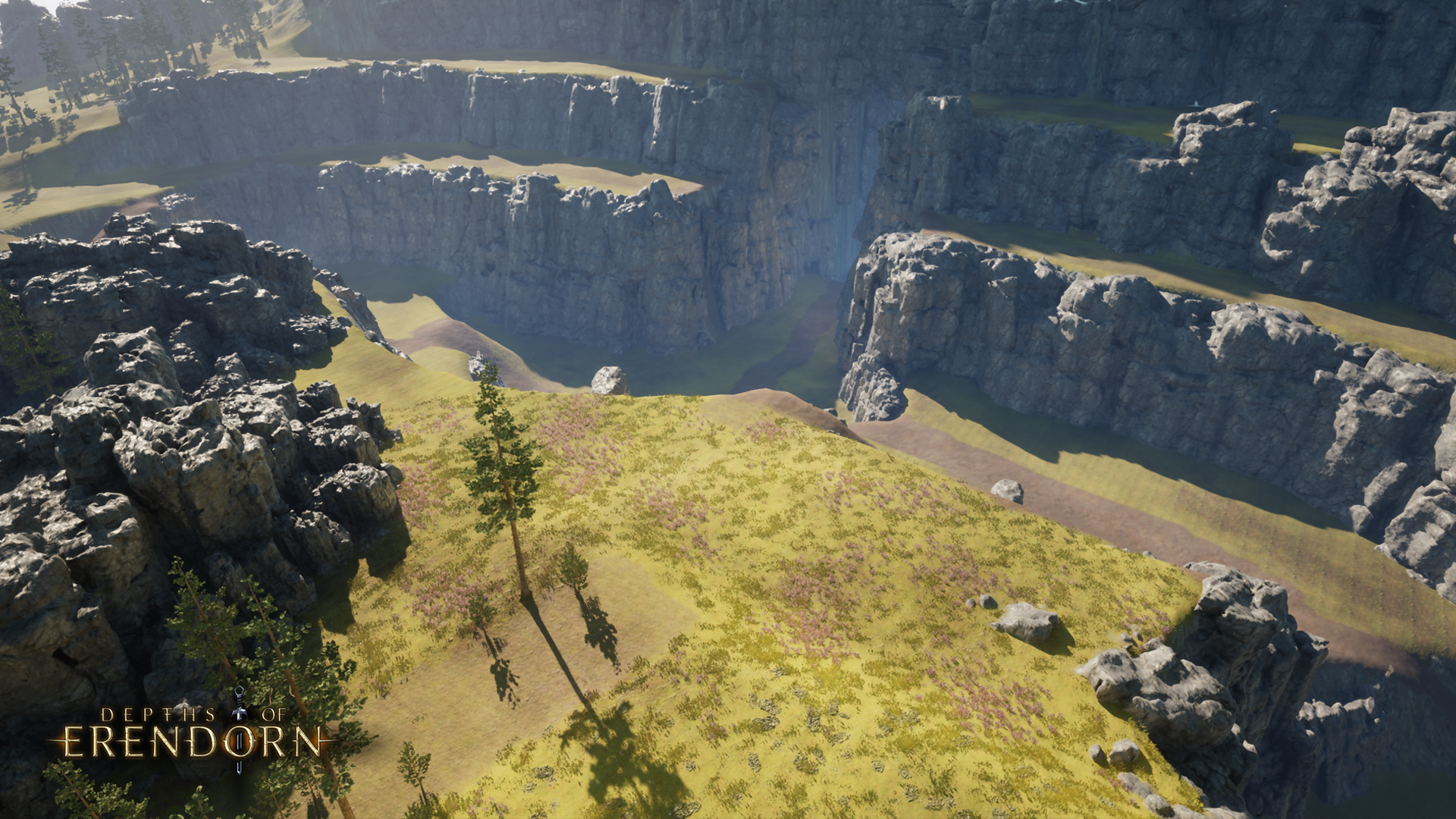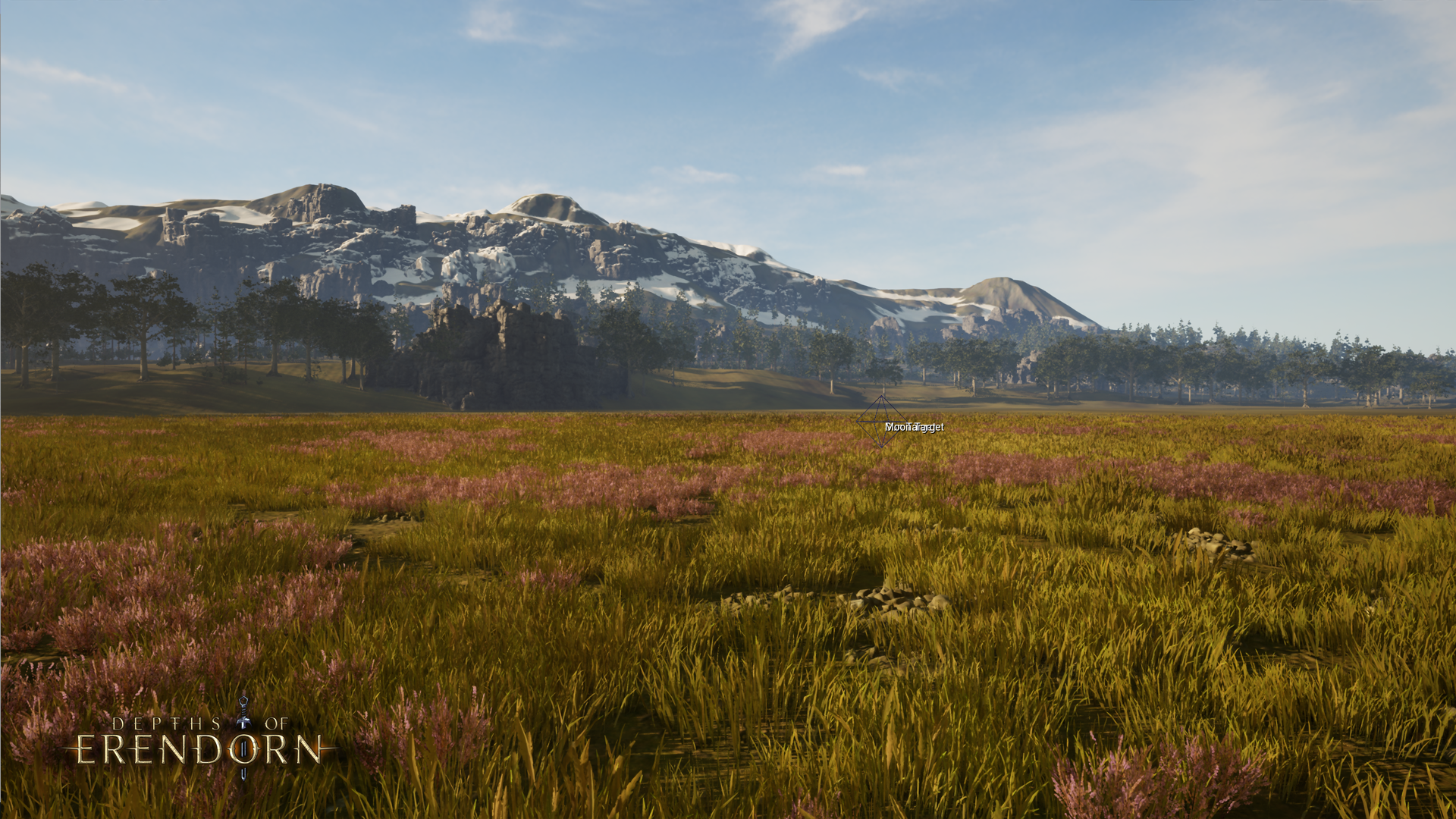Welcome back to another devlog installment, where we’ll be talking about 3D modelling, unique rigs for animation, environment design and a whole lot of programming. Remember to join us on Twitter, Instagram and Reddit for all the daily updates on Depths of Erendorn!
3D Character Modelling
After texturing the body of the Daggerclaw Harpy, which we showed in our last devlog, this week we moved onto texturing the clothes for the two series of Harpies we previously modelled: the Slayers and the Wanderers. Starting with the Slayers, we tried many different colour combinations for their tabard, underskirt and sash - but we had difficulties choosing colours that meshed well together. There was also a lot of pressure; since Slayers are the most powerful members of the Daggerclaw Harpy army, they are entitled to look grand - and so the colours we chose had to really reflect this!
In the end, we decided on a combination of a deep red for the underskirt, a dark green for the tabard and an even darker green for the sash. This pallet worked particularly well because of how complementary these colours are to each other, as well as the regal connotations that they bring to the overall design.
After we found our perfect colour combo, we could start adding the final touches:
- A ruby red headpiece was created.
- The edges of the tabard were adorned with fine metallic detailing.
- The crest on the tabard was also textured in an aged gold material.
With all of this complete, we could begin texturing the clothes for the Wanderer series. We carried over the same colour scheme used for the Slayers in order to have some coherency between the two classes. With this in mind, we made their skirt and sash a deep red colour while their rolled-up blanket was textured in a dark green material. Once this was done, we:
- Added a deep brown, leather texture to the satchel and waist armour.
- Added bronze detailing to the waist armour, as well as to the belt buckles.
- Made the paper scrolls that Wanderers carry appear old, worn and distressed.
This finishes off our work on the Daggerclaw Harpies so far! Now we can begin working on creating a full base mesh for the Parakaw, one of the most powerful races of spellcasters known to Erendorn. While we already have a model of this playable character, we are creating a new base mesh for future use in things like test animations. We will also be able to use this Parakaw when we continue testing character customisation systems in the game engine, so it will be useful for many reasons!





Animation
This week, our Animator did some research on unique rigs in games. We aim to use unique rigs as a way of making all the classes within an entire character race, e.g. the Humans, share and be compatible with a single rig. In fact, the goal for Depths of Erendorn is to have a single rig for every race in the game - that way, not only will our workflow be optimised, but character generation in the game will be much faster as well. Fewer rigs generally leads to less lagging so we’re eager to get this underway!
With all that in mind, our Animator created a unique rig that will fit every class of character within the Human race, from Knights and Sorceresses to Bandits and Beastmasters. To test it out, a few Human characters were skinned on this unique rig, starting with the base mesh. The first character we tried was the Mage which, after optimising the dress, was sent to our Character Artist for necessary mesh changes.
Another way we tested this unique rig was by importing the walk cycle we have for Human characters onto it. Doing this will allow us to check the deformation on the mesh for all the different Human classes, so we will be continuing that work into next week!
https://depthsoferendorn.blob.core.windows.net/assets/HumanRig@Testing.mp4
As we begin to attempt creating a single rig for each character race, we've first created a unique a rig that all classes of Humans will share. In this animation test, we have imported the walk cycle onto the rig to check the deformation on the mesh. We did this for each character class.
Environment Art
Now onto the environment! We started blocking out primary forms for large scale mountain terrain this week. This terrain will eventually be used in the character selection screen, based on the awesome concept painting one of our artists has created.
In addition to this, the pine trees we’ve been creating over the last couple of devlogs have been getting some more love. Improvements have been made to the leaf cards of the pine trees, increasing leaf density whilst also reducing the overall polycount. The leaf shader was also improved in the engine so that it now depicts richer colours and more realistic lighting.

Programming
Inside the programming department this week, many improvements have been made to the appearance of the character select screen and creation menus, namely to:
- Transition animations.
- Preloading of abilities.
- Appearance of buttons.
- Ordering of classes.
We also set right-clicking as ‘page back’ on the creation menu and forced a character list update upon successful creation of a character. We also made a few additions in this area:
- We added a ‘last chosen account character’ to local save data.
- We added a ‘delete character’ command and confirmation.
- We added a menu to the test scene for the purposes of camera testing.
With all of this in place, the transition from the character select and creation screens is now much more refined and to give us an idea of what these screens look like in an actual scene, our Programmers simply duplicated an environment art scene that we’ve been working on and used this as the background. This scene will act as a placeholder until we have finished recreating the painting of our character selection scene in the engine.

As a bit of context, when we started our transition from Unity to Unreal Engine, we were just going to remake the old placeholder screens and menus, purely for functionality, and not worry about the new design since everything is still subject to change. But we think it’s a good idea to build what we’re designing so that we can actually see it in the game and make improvements based on that. As for the environment, like we said, we just duplicated this from a test scene so that we’re not constantly looking at everything in a grey, undeveloped world!
Following this, a lot of work was carried out on Lobbies this week:
- The Lobby Browser now shows active lobbies in the client.
- We fixed a bug that occurred when requesting new lobby data.
- Lobbies in the list should no longer update themselves when new information is available.
- The Lobby List should not be populated anymore, and should now also be able to be refreshed.
Creating a new Lobby now returns the lobby data to the client, cutting out the need for an extra call to the server. Finishing off the week, our Programmers fixed a bug where widgets were referencing destroyed classes when closing the game. We also cleaned up editor dependencies to allow the project to be packaged.

Thanks for joining us for another weekly devlog! Head over to our socials to keep up to date with all the latest and greatest!








